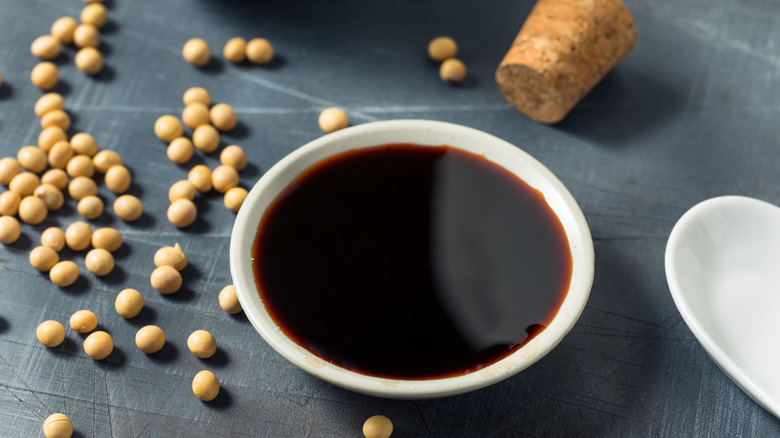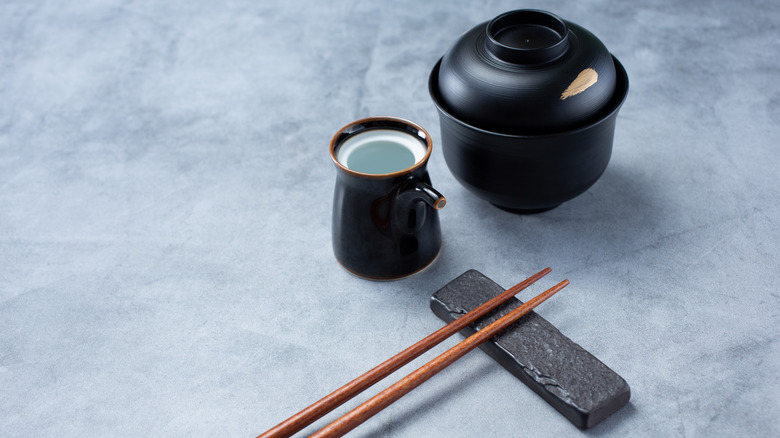What's The Difference Between Tamari And Soy Sauce
The terms soy sauce and tamari get thrown around in much the same context, prompting curious foodies to wonder if they are in fact the same thing. While they are extremely similar — both pack a salty, umami punch and they are often used interchangeably — they are not exactly the same. And the difference between the two all comes down to the ingredients.
Both soy and tamari sauces are made from soybeans along with a few extra ingredients. Let's start with soy sauce. In addition to those yummy and good-for-you little beans, it's made with water, salt, and wheat (as much as 50% of the content being devoted to this last ingredient). Tamari, on the other hand, while also made from soybeans, contains no wheat at all. It's a vegan, gluten-free alternative that is a much more viable option for someone avoiding wheat. It was originally discovered as a flavorful byproduct of the miso-making process, and today it's made by fermenting something called koji and collecting the resulting liquid. In terms of price, tamari tends to be a bit more expensive than soy sauce due to the slight differences in production and ingredients
Two distinct sauces with impressive versatility
The two sauces differ slightly in taste and texture, with tamari having a thicker consistency and a more balanced, savory flavor, while soy sauce lends to a thinner texture and a sharper, saltier taste. Another important point of distinction is that soy sauce originated in China and was eventually adopted by Japanese cuisine. Tamari, on the other hand, is a Japanese invention. The good thing is that, despite these differences, the two can be used interchangeably. So if you want to make an incredible honey soy marinated chicken thighs recipe but want to steer clear of gluten, it's okay to use tamari as a swap for soy sauce.
Soy sauce pairs great with just about anything, bringing a salty kick to everything from sushi to more unexpected dishes like scrambled eggs with a surprise umami punch. You can also mix it with other ingredients like tahini for a flavor-packed condiment or you can toss it in your wok to give fried rice the perfect color and flavor profile. Tamari is equally versatile, serving as a standalone dip for sushi or gyoza, and you can even transform your chili by swapping out the salt for the more flavorful but still salty tamari.
Last but not least, when it comes to soy sauce and tamari, they both have salt on their lists of ingredients. While tamari's flavor is more balanced than salt-dominant soy sauce, you should still check labels if you're trying to avoid an excess of salt in your diet. Luckily, both sauces offer low-sodium versions that can easily be found online if they aren't available in your local grocery store.

